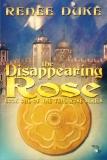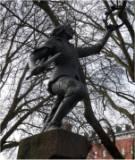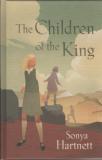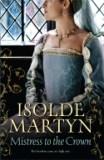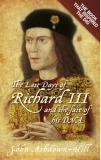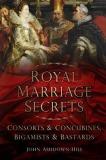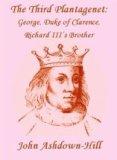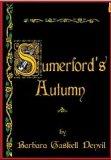
Literature Matters: The White Queen
The White Queen by Philippa Gregory, World Book Night edition, 2013
I only read this book because my local library gave me a free copy on World Book Night – and by the time I’d finished, I was sincerely glad I hadn’t paid for it.
The underlying story is good (based on the incredible life of Elizabeth Woodville, Queen of Edward IV, it could hardly be anything else); and two pages of bibliographic references show that the author has done her homework. That she has drawn from some of the more lurid sources isn’t surprising – this is, after all, a romantic novel – thus we see Elizabeth waylaying Edward for their first meeting as a supplicant clutching the hands of her two little boys; and shortly after, the hackneyed ‘death before dishonour’ scene in which she grabs his dagger and threatens to cut her throat rather than be seduced. The heroine and her mother are both shown as practising witches, capable of whistling up storms, causing Richard of Gloucester to lose the use of his arm and, of course, ensnaring Edward; and throughout, Elizabeth harks back to her supposed descent from the French water-goddess Melusina. (The legend of Melusina and her ducal lover crops up periodically, in passages intended to echo Elizabeth and Edward’s relationship. I found these chokingly annoying, but luckily they appear in italics so can be easily spotted and skipped without detriment to the main narrative).
The bulk of the story is told in the first person, present tense, by Elizabeth Woodville. This gives The White Queen a certain freshness and immediacy, although the style is difficult to carry off plausibly in this genre, and I wasn’t overly impressed by Gregory’s attempt. The early chapters are riddled with references to Edward as a ‘boy’; and while he might have been five years Elizabeth’s junior, I can’t imagine her (or any 15th century lady) using the term for a man well into his majority – let alone for a proven warrior who had reigned as king for three years by the time the story starts. Much of the dialogue is clunky and full of over-explication; this may be necessary to communicate the background history to the reader, but it makes for some pretty unlikely conversations between characters of the time. And Gregory wins my personal award for ‘Most Excruciating Bit of Dialogue in Any Historical Novel’ with Jacquetta, Duchess of Bedford’s remark to Cecily, Duchess of York, regarding the latter’s son George, Duke of Clarence: ‘…what would one call him?’ She pauses to wonder what one would call Cecily’s favourite son, then she finds the words: ‘An utter numpty.’ Unbelievable! Bad enough to employ such a grotesque anachronism; even worse to deliberately draw attention to it as though it’s clever and funny. (I guess Gregory thinks it is; she must be laughing all the way to the bank to have fans who pay good money to read such ghastly stuff).
To me, the best parts of The White Queen were the lively battle scenes (possibly because they’re not told in Elizabeth’s voice), the imaginative resolution of the ‘Princes in the Tower’ mystery and Elizabeth’s relationship with Richard III in the closing chapters. But altogether I found it an unsatisfying experience which left me baffled as to why this author is so popular – she’s certainly no Jean Plaidy or Antonia Fraser. Her graceless prose has nothing beautiful to wallow in, nothing substantial to get the teeth into; her sentences are short, her language so basic that (bar a modicum of sex and violence) she might be writing for children. Maybe that’s the appeal – it’s quick, simple, undemanding bland pulp. But if The White Queen is a fair representation of Gregory’s work, it’ll be the first and last of it I read – and I sure as hell won’t be watching the forthcoming TV adaptation!
Conclusion? Don’t waste your money. Buy David Baldwin’s non-fiction biography of Elizabeth Woodville instead; it beats this hands-down for readability and interest.
The above was first published on 16 May 2013 on Helen’s website ‘Helen Rae Rants!‘. We thank her for permitting us to publish it here as well.
 Should you be looking for a special Christmas present for a budding Ricardian, a great idea is Annette Carson’s Richard III: A Small Guide to the Great Debate.
Should you be looking for a special Christmas present for a budding Ricardian, a great idea is Annette Carson’s Richard III: A Small Guide to the Great Debate.
